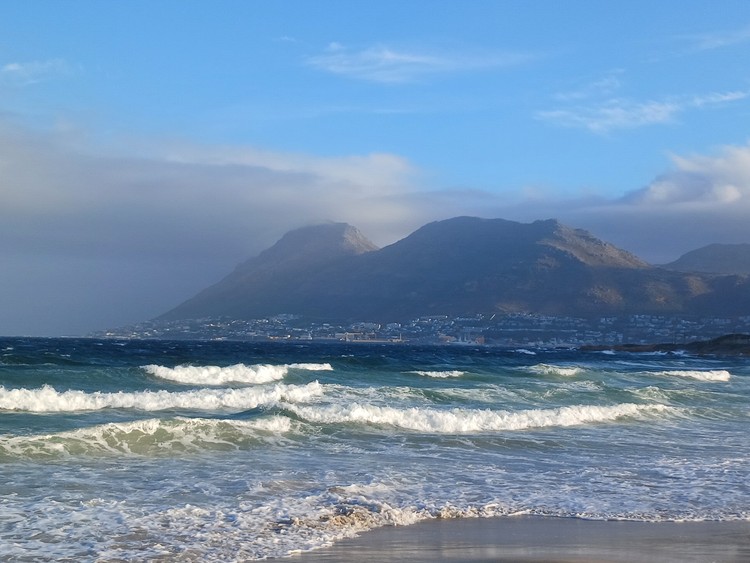Big old fat fecund females: celebrating Marine Protected Areas Day
In spite of illegal fishing, our MPAs do work
Part of the Table Mountain Marine Protected Area. South Africa has 41 MPAs. Photo: Renée Bonorchis
In the dark with lights dimmed, transponders disengaged, engines off and just the sound of the ocean, illegal fishing boats often navigate slowly into the coastal waters off Pondoland, ready to ravage the sea.
These waters, which stretch from Port Edward in the south of KwaZulu-Natal to Port St Johns on the Eastern Cape’s Wild Coast, still have abundant fish stocks. The coastline is hard to access by road and few people live close to the sea. The boats sneaking in know that the lack of competition means bigger, better catches.
The reason why there is so much fish is that this is the Pondoland Marine Protected Area (MPA), one of 41 MPAs in South Africa. These MPAs cover 5.4% of the sea which is under South African law, and South Africa, like many other countries, has promised to protect 30% of its sea by 2030.
Marine Protected Areas Day, which is today, is now a global event but was started in South Africa in 2021, during the pandemic, by a small band of passionate people from scientists to communications experts and graphic designers.
South Africa has had MPAs since the 1960s, with Tsitsikamma being the first, and there’s compelling evidence that, illegal fishing notwithstanding, MPAs do work.
From scientific research and information provided from people living in or near MPAs, it’s clear that demarcating protected areas is effective when it comes to increasing the abundance of fish, protecting endangered and endemic species, looking after ecosystems, safeguarding South Africa’s almost unrivalled marine biodiversity, breeding healthier, more resilient fish and producing the all-important BOFFFs.
That’s the term used in marine circles for big old fat fecund female fish. Compared with younger, mature female fish, the BOFFFs produce more eggs, bigger eggs, healthier eggs and eggs that turn into larvae that grow more quickly and show more resilience to changing conditions. This keeps fish stocks stable and productive.
Dr Bruce Mann is a fisheries scientist whose career and affiliation with the Oceanographic Research Institute has spanned more than three decades and who has authored and co-authored numerous scientific papers on linefish and MPAs.
He has tagged more than 35,000 fish so that they can be tracked and better understood. He says it’s not that he’s a particularly good fisherman (which may be a lie); it’s just that he fishes in MPAs for his research and there are actually fish in MPAs.
“What you see very quickly is if you stop fishing, stop harvesting and removing resources from an area, as long as it’s a good area that’s got the right habitats for those species, they respond quickly by increasing in number,” Mann says. “You see the numbers rocketing up and the biomass increasing very quickly with fish stocks up to five or six times higher than in the fished areas outside of an MPA.”
What this means is that adjacent to the MPA there will, in time, be spillover – healthy fish moving out of the MPA region in increasing numbers - and that’s good for coastal communities and licensed commercial fishing.
The Department of Forestry, Fisheries and the Environment (DFFE), which monitors some MPAs, says for example, “[D]ata from the De Hoop MPA indicate that this MPA is effective in conservation of coastal fish species.”
South Africa also has seven Hope Spots, protected areas around the world set up by Mission Blue, which has spent more than a decade working to ignite public support for a global network of MPAs. The Hope Spots cover more than 57 million square kilometres of the world’s ocean which sounds like a lot but is less than 10% of the sea.
Dr Tessa Hempson, Mission Blue’s South African-born chief scientist explains that the Hope Spots rely on community support rather than legislation or enforcement. And there’s clear evidence of the efficacy of Hope Spots.
Mann says he’s worked with fishing communities and taken people into the MPAs to go fishing, and they’ve seen the positive impact that MPAs can have on restoring fish stocks. He’s also a believer in using community support to monitor and protect the marine resources that will benefit everyone if they’re safeguarded “and we have to pick up the challenge by having management agencies that are capable of responding”.
Support independent journalism
Donate using Payfast

Don't miss out on the latest news
We respect your privacy, and promise we won't spam you.
Next: Khayelitsha parents desperate to find special needs schools for their children
Previous: SIU starts its probe into street lights tender in Nelson Mandela Bay Municipality
© 2024 GroundUp. This article is licensed under a Creative Commons Attribution-NoDerivatives 4.0 International License.
You may republish this article, so long as you credit the authors and GroundUp, and do not change the text. Please include a link back to the original article.
We put an invisible pixel in the article so that we can count traffic to republishers. All analytics tools are solely on our servers. We do not give our logs to any third party. Logs are deleted after two weeks. We do not use any IP address identifying information except to count regional traffic. We are solely interested in counting hits, not tracking users. If you republish, please do not delete the invisible pixel.

